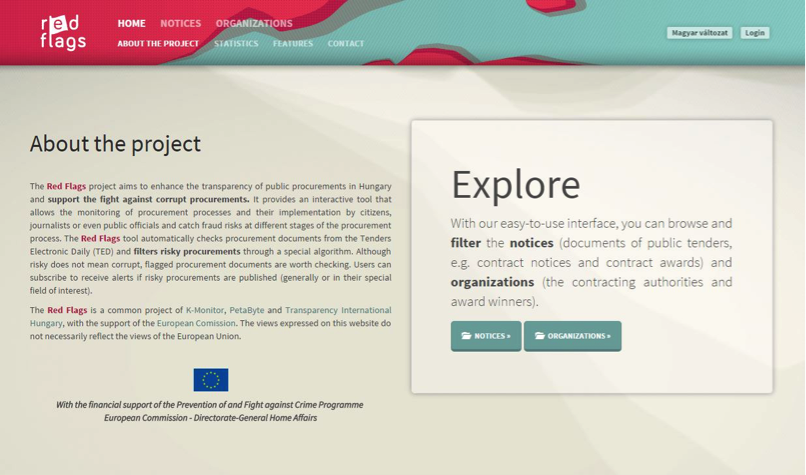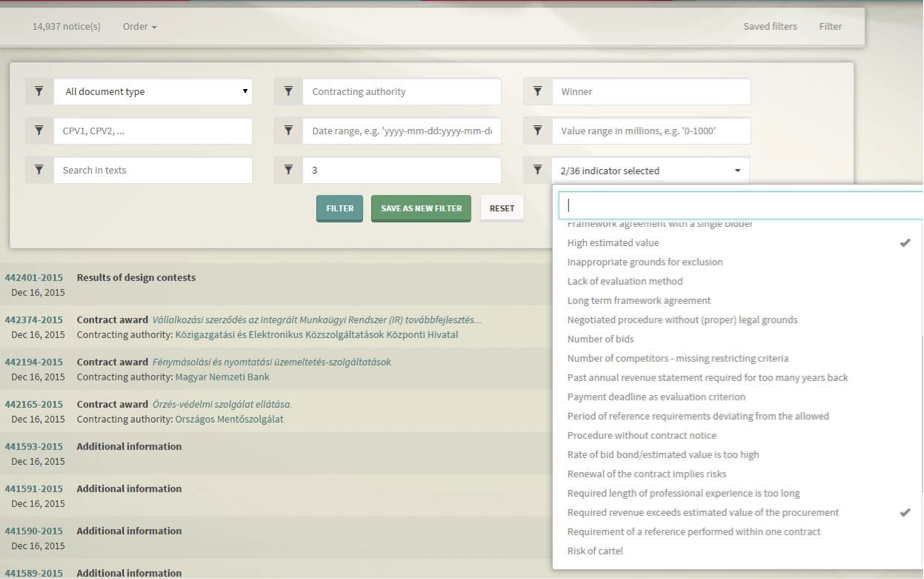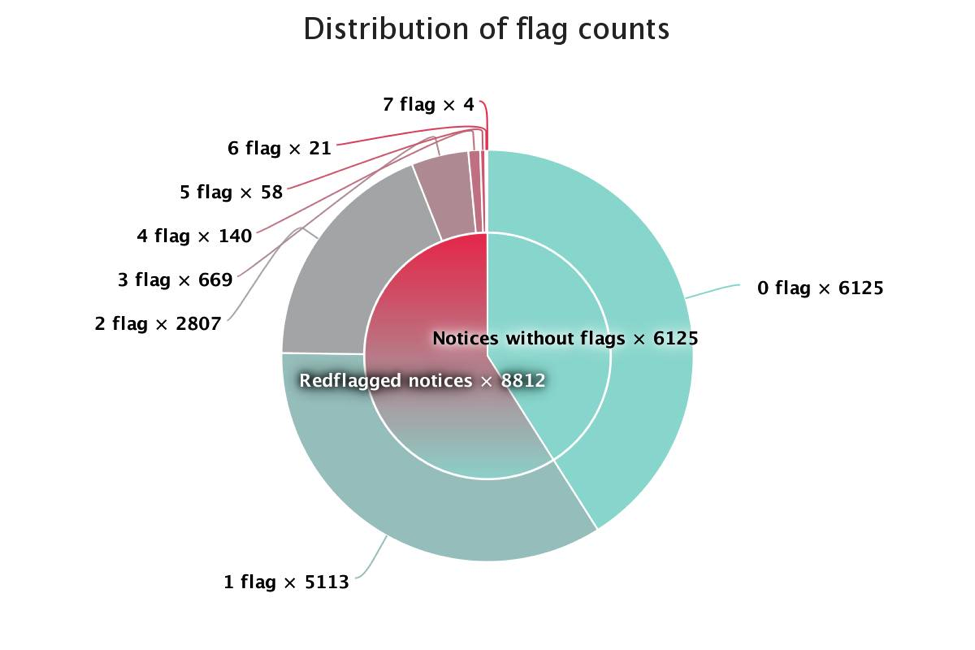Red Flags - Automatized Procurement Monitoring in Action
Jan 15, 2016
The OpenBudgets.eu platform highlights financial transparency organizations and initiatives around Europe. K-Monitor kicks off this series by presenting their project: redflags.eu.
By Anita Koncsik, K-Monitor Watchdog for Public Funds
Risk of cartell? Fishy reference works required? Winners awarded with tenders of high estimated value?
For those, who would like to know more about the risks encoded into the wording of procurement notices, we would like to introduce the new common project of K-Monitor, PetaByte and TI-Hungary, (supported by the European Comission).

We all have heard about tailor-made procurements and dubious contract notices with suspicious requirements on either financial ability or technical capacity. We also can recall complete procedures escaping publicity on the legal basis of regulations enabling initiation of procedures without notices. That’s why we are curious of what is happening in one of the most important channel of public spending and we try to map the potential risk factors affecting procurement praxis. Our interactive tool allows the monitoring of procurement procedures with the help of a formal algorithm-system incorporating approximately 40 indicators elaborated on the basis of regulative loopholes (and infringement of the law) and so called bad practices (remaining within the scope of legally accepted operations, but still implying corruption risks).
The use of red flags is internationally acknowledged: they are a part of the anticorruption toolkit of a number of international organisations, including World Bank, and other watchdog NGOs with strong focus on procurement data. However, no red flag tool has attempted to experiment with the possibility of automatized forecast. The tool automatically checks procurement documents from the Tenders Electronic Daily (TED) and filters risky procurement components through the special algorithm-system based on the use of regexen (regular expressions). This remarkable innovation, however, has a price: the system can only use its text filters effectively if it is exactly told what to look for. During the test period, K-Monitor, with the help of a team colleagues and volunteers examined thousands of public notices to define and refine the catalogue of searchable words and partial texts in the relevant lots of tender notices.
Now, the users can preset filter combinations suitable for their particular interests (like looking for notices with a given number of flags including a certain indicator e.g search for notices with 3 flags including the one for having high estimated value and at the same time requiring annual revenue higher than the estimated value of the tender, etc.)

The users also can subscribe to receive alerts if risky procurements are published that meet the requisites of the special filters they set.
The system has already scanned almost 15 000 notices and flagged more than 8000 as a bearer of at least one identified risk factor. And although risky does not mean corrupt, flagged procurement documents are worth checking either by investigative journalists or monitoring authorities - that are also target groups of the project.

